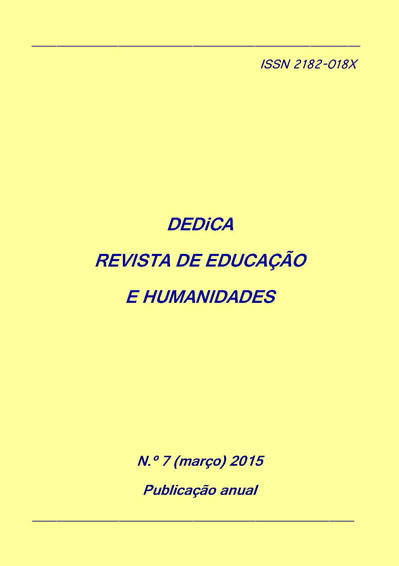Lugares comunes. La interdisciplinariedad como paradigma en las gramáticas de creación
DOI:
https://doi.org/10.30827/dreh.v0i7.6938Palabras clave:
disciplinas artísticas, lo escultórico, límite, obra de arte, pensamiento creadorResumen
Al hablar de interdisciplinariedad es necesario mencionar y presentar un pensamiento del límite y quizás un pensamiento límite que se cuestione sobre las dinámicas de creación que caracterizan el territorio de indeterminación del Arte actual, sin olvidar el hecho escultórico en particular. Hoy el panorama artístico y de creación es tan abierto y fluctuante que es difícil determinar sus límites. Pensar el límite será plantear y exponer los lugares comunes donde se da una tregua a esta velocidad de transformación, se abran miradas reflexivas en torno a ese espacio de generación de pensamiento, de imágenes y formas que es común o que aparece cuando dos o más disciplinas se interrelacionan e interactúan. Desde la literatura, el cine, pasando por la música y el arte –sus derivas y expansiones–, se trata de presentar el ámbito de la creación escultórica como paradigma de la interdisciplinariedad en las gramáticas de la creación. Así como, observar los espacios de relación (límites) o “lugares comunes” entre las artes como productores de obra y pensamiento.
Descargas
Citas
Aliaga, J. V. (2004). Arte y Cuestiones de género. Madrid: Nerea.
Ardenne, P. (2006). Un arte contextual. Creación artística en me-dio urbano, en situación, de intervención, de participación. Murcia: CEN-DEAC.
Azúa, F. (1990). El aprendizaje de la decepción. Navarra: Pamie-la.
Baudrillard, J. (2000). El intercambio imposible. Madrid: Cátedra.
Baudrillard, J. (2006). El complot del arte. Ilusión y desilusión esté-ticas. Buenos Aires: Amorrortu.
Bourriaud, N. (2007). Postproducción. Buenos Aires: Adriana Hi-dalgo Editora.
Bourriaud, N. (2008). Estética relacional. Buenos Aires: Adriana Hidalgo Editora.
Bourriaud, N. (2009). Formas de vida. El arte moderno y la inven-ción de sí. Murcia: Cendeac.
Brea, J. L. (2003). El tercer umbral. Estatuto de las prácticas artísti-cas en la era del capitalismo cultural. Murcia: CENDEAC.
Claramonte Arrufat, J. (2011). Arte de contexto. Madrid: Editorial Nerea.
Crow, T. (2002). El arte moderno en la cultura de lo cotidiano. Ma-drid: Akal.
Derrida, J. (1997). Mal de archivo. Una impresión freudiana. Ma-drid: Trotta.
Eco, U. (1992). Obra abierta. Barcelona: Planeta-De Agostini.
Foster, H. (2001). El retorno de lo real. La vanguardia a finales de siglo. Madrid: Akal.
Jameson, F. (1995). La posmodernidad o la lógica cultural del ca-pitalismo avanzado. Barcelona: Paidós.
Krauss, R. E. (1996). La escultura en el campo expandido. En R. E.
Krauss, La originalidad de la vanguardia y otros mitos modernos. Ma-drid: Alianza Forma.
Lull, J. (1995). Medios, comunicación, cultura: Aproximación glo-bal. Buenos Aires: Amorrortu.
Lyotard, J.-F. (1989). La condición posmoderna. Madrid: Cátedra.
Molinuevo. J. L. (2008). Cambios de tiempo. En Heterocronías. Tiempo, arte y arqueologías del presente, 197-229. Murcia: Cendeac.
Parcerisas, P. K. (2007). Conceptualismo(s) poéticos, políticos y periféricos. En torno al arte conceptual en España (1964-1980). Madrid: Akal.
VVAA. (2008). Heterocronías. Tiempo, arte y arqueologías del presente. Murcia: CENDEAC.
Wallis, B. (2001). Arte después de la Modernidad. Nuevos plan-teamientos en torno a la representación. Madrid: Akal.












